The Automatic Metal Polishing Machine is a buffing machine for metal surfaces. Low Price & High Quality & Free consultation from the manufacturer
An automatic metal polishing machine is a machine used for polishing metal surfaces. It is designed to work on a wide range of metals, including stainless steel, aluminum, brass, and copper. The machine is fully automatic, which means it can polish metal surfaces without any human intervention.
Automatic metal polishing machines are vital in the modern manufacturing landscape, offering precision, efficiency, and consistency in metal finishing. These machines are designed to automate the polishing process, significantly reducing manual labor and increasing productivity. Whether used in automotive, aerospace, medical device manufacturing, or various other industries, automatic metal polishing machines ensure that metal parts have smooth, polished surfaces that meet strict industry standards. This guide delves into the intricacies of automatic metal polishing machines, exploring their types, features, applications, benefits, and maintenance practices. By understanding these aspects, businesses can make informed decisions about integrating these advanced machines into their production lines, optimizing operations, and achieving superior product quality.
What is an Automatic Metal Polishing Machine?

An automatic metal polishing machine is a sophisticated piece of equipment designed to polish metal surfaces with minimal human intervention. These machines use abrasive materials and advanced technology to remove surface imperfections, such as scratches, oxidation, and burrs, resulting in a smooth, reflective finish. The automation aspect refers to the machine’s ability to operate independently, following pre-programmed instructions to perform repetitive polishing tasks with high precision and consistency. This automation significantly reduces the need for manual labor, allowing for more efficient and cost-effective production processes.
Automatic metal polishing machines come in various configurations, each tailored to specific industrial needs. Some machines are designed for high-volume production, capable of polishing multiple parts simultaneously, while others are specialized for handling complex geometries and intricate designs. The key components of these machines typically include polishing heads or wheels, abrasive compounds, and a control system that regulates the polishing parameters such as speed, pressure, and duration. By automating the polishing process, these machines enhance productivity, ensure uniform quality, and reduce the risk of human error, making them indispensable in industries where precision and surface finish are critical.
Types of Automatic Metal Polishing Machines

Automatic metal polishing machines are available in several types, each designed to meet specific industry requirements and production needs:
- Rotary Table Polishing Machines: These machines feature a rotating table where parts are mounted. Multiple polishing heads work on the parts as they rotate, ensuring consistent and uniform polishing. Rotary table machines are ideal for high-volume production and can handle various part sizes and shapes.
- Robotic Polishing Machines: Equipped with robotic arms, these machines offer unparalleled flexibility and precision. The robotic arms can reach complex geometries and hard-to-access areas, making them perfect for intricate parts. Programmable control systems allow for customization and adaptability to different polishing tasks.
- Flat Surface Polishing Machines: Designed specifically for polishing flat metal surfaces, these machines use abrasive belts or wheels to achieve a smooth finish. They are commonly used in industries where large, flat panels or sheets require polishing.
- Cylindrical Polishing Machines: These machines are specialized for polishing cylindrical objects such as pipes, tubes, and shafts. They use rotating abrasive belts or wheels to polish the entire surface of the cylindrical parts evenly.
- Belt Polishing Machines: Utilizing continuous abrasive belts, these machines are suitable for both flat and contoured surfaces. The belts can be adjusted to different tensions and speeds, providing versatility for various polishing applications.
- Vibratory Polishing Machines: These machines use a vibratory action to polish metal parts placed in a container with abrasive media. They are effective for polishing small parts and removing burrs and sharp edges.
Each type of automatic metal polishing machine offers unique advantages, making it essential for businesses to choose the right machine based on their specific needs, production volume, and the complexity of the parts being polished.
Key Features and Technologies
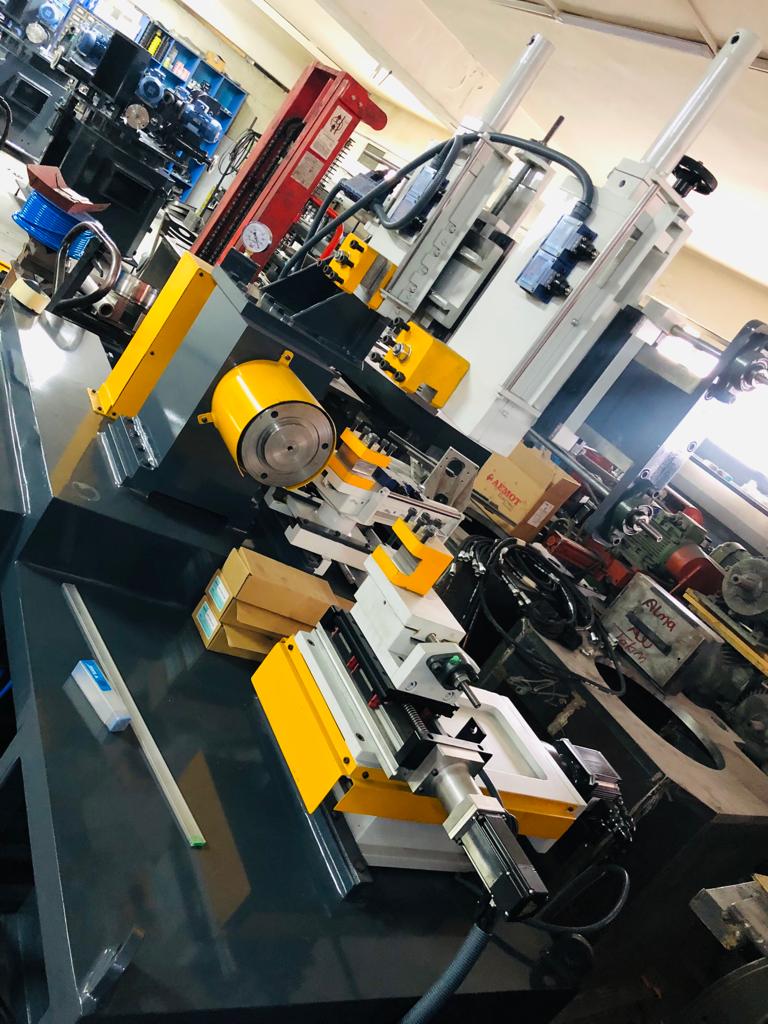
Automatic metal polishing machines incorporate advanced features and technologies to enhance performance, safety, and efficiency:
- Programmable Control Systems: These systems allow operators to set and adjust polishing parameters such as speed, pressure, and cycle time. Programmable controls ensure precision and repeatability, enabling the machine to handle complex polishing tasks with ease.
- Advanced Abrasive Materials: The use of high-quality abrasive materials, such as diamond, ceramic, and silicon carbide, ensures effective polishing and long-lasting performance. These materials can be tailored to specific polishing requirements, providing optimal results for different metals and surface conditions.
- Multi-Axis Movement: Machines with multi-axis capabilities can move the polishing heads in various directions, allowing for comprehensive coverage of complex geometries. This feature is particularly beneficial for polishing intricate parts and achieving uniform finishes on all surfaces.
- Safety Features: Integrated safety mechanisms, such as emergency stop buttons, protective guards, and dust extraction systems, ensure safe operation and minimize the risk of accidents. These features protect operators and maintain a clean working environment.
- Automation and Robotics: Advanced automation and robotic systems enhance the efficiency and precision of the polishing process. Robotic arms can be programmed to perform intricate polishing tasks, reducing the need for manual intervention and increasing productivity.
- Real-Time Monitoring and Feedback: Sensors and monitoring systems provide real-time data on the polishing process, allowing operators to make adjustments as needed. This feature ensures consistent quality and helps identify potential issues before they affect the final product.
- Energy Efficiency: Modern machines are designed to be energy-efficient, reducing power consumption and operating costs. Energy-efficient components and systems contribute to sustainable manufacturing practices.
These features and technologies make automatic metal polishing machines highly effective and reliable tools for achieving superior surface finishes in various industrial applications.
Applications in Different Industries
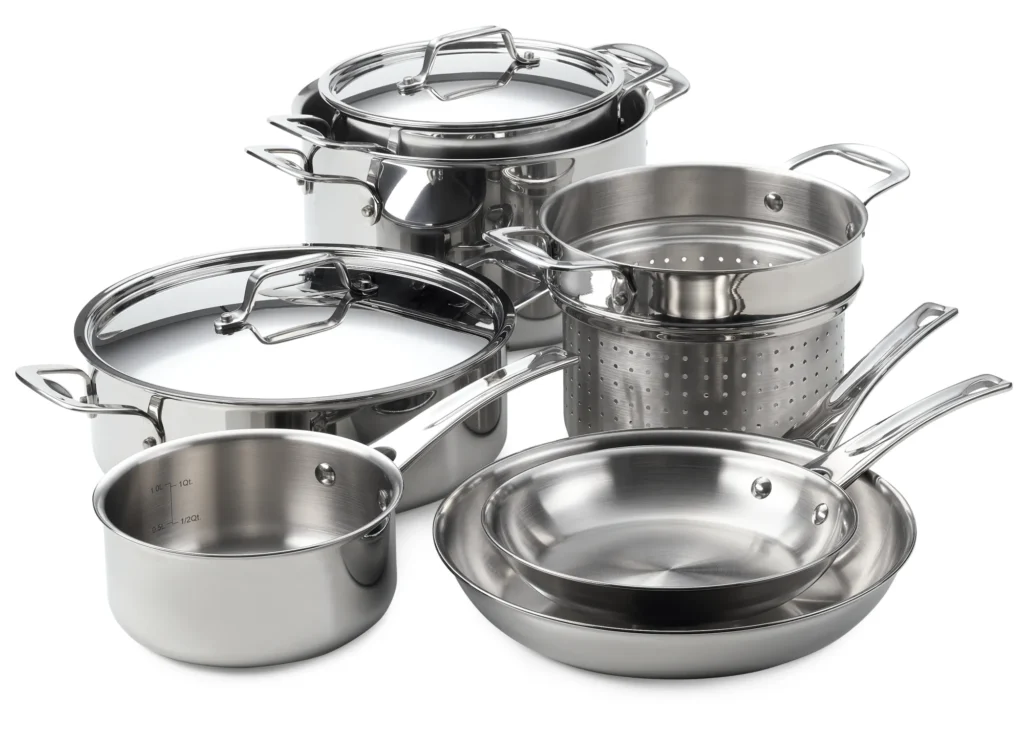
Automatic metal polishing machines are used across a wide range of industries, each with specific requirements for surface finishing:
- Automotive Industry: In the automotive sector, polished metal components enhance the appearance and durability of vehicles. Automatic polishing machines are used to finish parts such as engine components, wheels, trim pieces, and body panels, ensuring a high-quality, mirror-like finish.
- Aerospace: Aerospace components require precise and smooth finishes to meet stringent performance and safety standards. Polishing machines are used to finish turbine blades, engine parts, landing gear, and other critical components, ensuring optimal aerodynamic performance and reduced wear.
- Medical Device Manufacturing: The medical industry demands polished surfaces for surgical instruments, implants, and other medical devices to ensure biocompatibility and hygiene. Automatic polishing machines provide the necessary precision and consistency for these critical applications.
- Metal Fabrication: In metal fabrication, polished surfaces are essential for both aesthetic and functional purposes. Polishing machines are used to finish metal sheets, tubes, and structural components, enhancing their appearance and protecting against corrosion.
- Jewelry and Watchmaking: High-end jewelry and watch components require meticulous polishing to achieve a flawless finish. Automatic polishing machines offer the precision needed to handle delicate and intricate pieces, ensuring a premium look and feel.
- Household Appliances: Polished metal parts are common in household appliances such as refrigerators, ovens, and washing machines. Polishing machines ensure these components have a sleek, attractive finish that appeals to consumers.
- Industrial Machinery: Components used in industrial machinery, such as gears, shafts, and valves, benefit from polished surfaces that reduce friction and wear. Polishing machines provide the necessary surface treatment to enhance performance and longevity.
The versatility of automatic metal polishing machines makes them indispensable in these and other industries, providing high-quality finishes that meet specific requirements and standards.
Benefits of Using Automatic Metal Polishing Machines
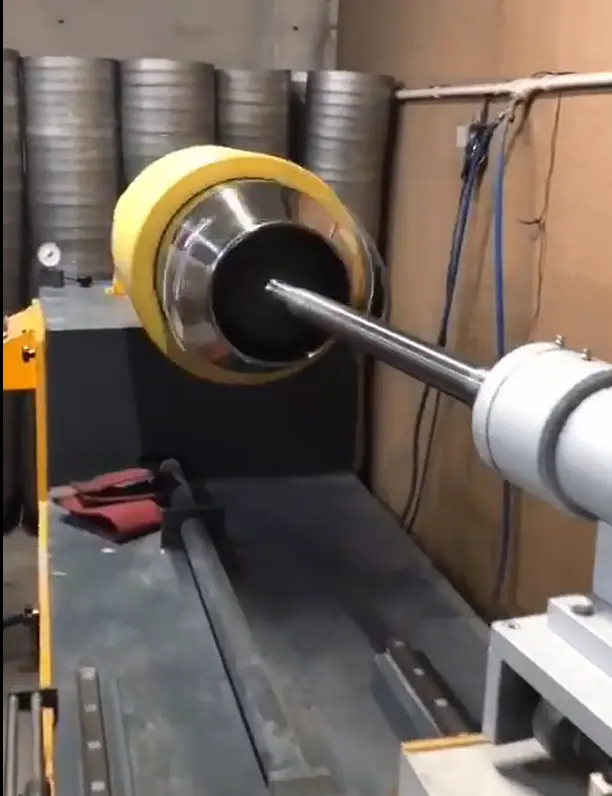
Investing in automatic metal polishing machines offers numerous benefits for manufacturers:
- Enhanced Productivity: Automation significantly reduces the time required to polish metal parts, increasing overall productivity. Machines can operate continuously, handling high volumes of parts with minimal supervision.
- Consistency and Precision: Automatic machines ensure uniform polishing across all parts, eliminating the variability associated with manual polishing. This consistency results in higher-quality finishes and reduces the likelihood of defects.
- Cost Savings: By automating the polishing process, manufacturers can reduce labor costs and minimize waste. The efficiency of automatic machines also leads to lower energy consumption and operating costs.
- Improved Surface Quality: Automatic polishing machines achieve superior surface finishes, enhancing the aesthetic appeal and functional performance of metal parts. Polished surfaces are smoother, more reflective, and more resistant to corrosion and wear.
- Versatility: These machines can handle a wide range of materials and part geometries, making them suitable for various industrial applications. The ability to customize polishing parameters allows for flexibility in achieving different finishes.
- Safety: Automated machines reduce the need for manual handling of parts, minimizing the risk of injuries associated with manual polishing. Integrated safety features further protect operators and ensure safe operation.
- Environmental Benefits: Advanced dust extraction and filtration systems reduce the release of harmful particles into the environment, promoting cleaner and safer working conditions. Energy-efficient designs also contribute to sustainable manufacturing practices.
- Scalability: Automatic polishing machines can easily be integrated into existing production lines and scaled to meet increasing demand. This scalability allows manufacturers to expand their operations without significant disruptions.
By leveraging these benefits, manufacturers can improve their production processes, enhance product quality, and achieve greater efficiency and profitability.
Choosing the Right Automatic Metal Polishing Machine
Selecting the right automatic metal polishing machine involves careful consideration of several factors:
- Material Compatibility: Ensure the machine is compatible with the types of metals you work with. Different metals may require specific abrasive materials and polishing techniques.
- Part Size and Geometry: Consider the size and complexity of the parts you need to polish. Choose a machine that can accommodate your parts and effectively polish intricate shapes and surfaces.
- Production Volume: Determine your production needs and choose a machine that can handle the required volume. High-volume operations may benefit from machines with multiple polishing heads or rotary tables for increased throughput.
- Surface Finish Requirements: Assess the desired surface finish and ensure the machine can achieve the required level of smoothness and reflectivity. Machines with adjustable polishing parameters offer greater flexibility in achieving different finishes.
- Budget: Balance your budget with your production needs. While advanced machines with more features may have higher upfront costs, they can provide long-term savings through increased efficiency and reduced labor costs.
- Maintenance and Support: Consider the maintenance requirements and availability of technical support for the machine. Choose a reliable manufacturer with a good reputation for customer service and support.
- Future Expansion: Anticipate future growth and choose a machine that can scale with your business. Investing in a versatile and high-capacity machine can accommodate increasing production demands without the need for significant upgrades.
- Integration with Existing Systems: Ensure the machine can be integrated into your existing production line and is compatible with other equipment and processes. Seamless integration enhances workflow efficiency and reduces downtime.
By evaluating these factors, businesses can select the right automatic metal polishing machine to meet their specific needs and maximize their investment.
Maintenance and Best Practices
Proper maintenance is crucial to ensure the longevity and optimal performance of automatic metal polishing machines:
- Regular Cleaning: Clean the machine regularly to remove dust, debris, and abrasive residues. This prevents build-up that can affect performance and cause wear.
- Lubrication: Ensure all moving parts are properly lubricated to reduce friction and prevent wear. Follow the manufacturer’s recommendations for lubrication intervals and types of lubricants.
- Inspection and Calibration: Regularly inspect the machine for signs of wear or damage. Calibrate the machine as needed to maintain precision and accuracy in polishing.
- Replace Worn Components: Replace abrasive belts, wheels, and other consumable parts as they wear out. Using worn components can reduce polishing quality and increase the risk of damage to the machine.
- Monitor Performance: Keep an eye on the machine’s performance and address any issues promptly. Monitoring systems can provide real-time feedback on the polishing process, helping to identify and resolve problems quickly.
- Training and Safety: Ensure operators are well-trained in using and maintaining the machine. Emphasize safety practices to prevent accidents and injuries.
- Documentation and Records: Maintain detailed records of maintenance activities, repairs, and part replacements. This documentation helps track the machine’s condition and plan future maintenance.
By following these maintenance practices, businesses can ensure their automatic metal polishing machines operate efficiently and reliably, providing consistent high-quality finishes.
Future Trends and Innovations
The future of automatic metal polishing machines is shaped by several emerging trends and innovations:
- Advanced Automation and Robotics: The integration of advanced automation and robotics will continue to enhance the precision, efficiency, and versatility of polishing machines. Robots equipped with AI and machine learning capabilities can adapt to complex tasks and optimize polishing processes in real-time.
- Smart Manufacturing and IoT: The use of IoT and smart manufacturing technologies will enable real-time monitoring, predictive maintenance, and data-driven optimization of polishing processes. Connected machines can communicate with other equipment in the production line, improving overall efficiency and reducing downtime.
- Sustainable Practices: Environmental considerations are driving the development of eco-friendly polishing solutions. Innovations in abrasive materials, energy-efficient designs, and waste reduction technologies will contribute to more sustainable manufacturing practices.
- Customization and Flexibility: Future machines will offer greater customization and flexibility, allowing manufacturers to tailor polishing processes to specific requirements. Advanced control systems and modular designs will enable quick adjustments and upgrades.
- Enhanced Safety Features: Ongoing advancements in safety technology will further protect operators and reduce the risk of accidents. Improved sensors, automation, and ergonomic designs will enhance the overall safety and usability of polishing machines.
- New Abrasive Technologies: The development of new abrasive materials and technologies will enhance the effectiveness and durability of polishing processes. Innovations such as nanotechnology-based abrasives and advanced coatings will provide superior finishes and longer-lasting performance.
These trends and innovations will drive the evolution of automatic metal polishing machines, making them even more essential for achieving high-quality finishes in modern manufacturing.
Conclusion
Automatic metal polishing machines are indispensable tools in various industries, providing efficient, precise, and consistent surface finishing solutions. By automating the polishing process, these machines enhance productivity, reduce costs, and ensure superior surface quality. Whether in automotive, aerospace, medical device manufacturing, or other sectors, the benefits of using automatic metal polishing machines are substantial.
Investing in the right machine involves careful consideration of factors such as material compatibility, part geometry, production volume, and surface finish requirements. Proper maintenance and adherence to best practices are crucial to ensuring the longevity and optimal performance of these machines.
As technology continues to advance, the future of automatic metal polishing machines promises even greater automation, efficiency, and sustainability. By staying informed about emerging trends and innovations, businesses can make strategic investments that enhance their production processes and achieve outstanding results.
For more information on selecting the right automatic metal polishing machine for your needs or to request a quote, contact us today. Our team of experts is ready to assist you in finding the perfect solution to meet your specific requirements.
The machine is equipped with a series of rotating polishing heads, which are designed to move back and forth across the surface of the metal. The polishing heads are typically made from a series of cloth or felt pads, which are coated with a polishing compound.
The metal is placed onto a conveyor belt or roller system, which moves the metal through the machine. As the metal passes through the machine, the polishing heads rotate and move back and forth across the surface of the metal, applying the polishing compound and removing any imperfections or blemishes on the surface of the metal.
The machine is equipped with sensors and controls, which are designed to monitor the speed and pressure of the polishing heads, as well as the temperature and condition of the polishing compound. This ensures that the metal is polished to the highest possible standard, with a consistent finish across the entire surface of the metal.
The finished metal product is then discharged from the machine, ready for further processing or assembly. Automatic metal polishing machines are used in a wide range of industries, including automotive, aerospace, and metal fabrication.
Automatic Metal Polishing Machine
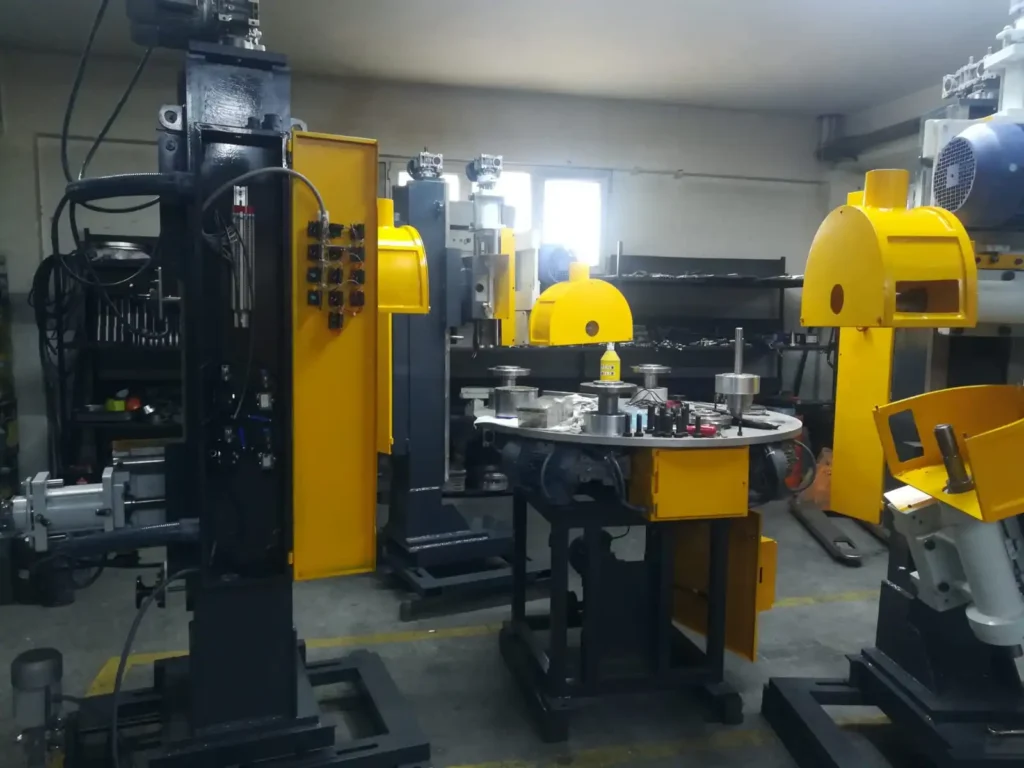
Automatic metal polishing machines are sophisticated tools that revolutionize the metal finishing industry. They provide a high degree of precision, efficiency, and consistency in polishing operations, significantly reducing labor costs and improving production output. These machines are designed to automate repetitive buffing tasks, ensuring consistent and uniform finishes across various metal workpieces.
Components of Automatic Metal Polishing Machines
- Workpiece Loading and Unloading System: This system automatically loads and unloads workpieces onto and from the buffing spindles, ensuring a continuous and uninterrupted buffing process. It may employ robotic arms, conveyor belts, or other automated mechanisms to handle workpieces efficiently.
- Buffing Spindles: The buffing spindles rotate the buffing wheels or mops, providing the driving force for polishing. They are typically controlled individually or in groups to accommodate different buffing stages and workpiece geometries.
- Buffing Wheels or Mops: These are the abrasive components that come into contact with the workpiece. They are made of various materials, such as cotton, felt, or sisal, and are impregnated with polishing compounds. The choice of wheel or mop depends on the desired finish and the specific buffing stage.
- Polishing Compound Delivery System: This system automatically dispenses polishing compounds onto the buffing wheels or mops, ensuring a consistent supply of abrasives and lubricants throughout the buffing process. It may utilize pumps, valves, and sensors to control the compound flow precisely.
- Workpiece Positioning and Orientation System: This system precisely positions and orients the workpiece relative to the buffing wheels or mops, ensuring uniform buffing and achieving the desired finish. It may employ sensors, cameras, and servo motors to achieve accurate positioning and orientation.
- Control System: The control system regulates the machine’s operation, including spindle speeds, buffing pressure, and compound delivery. It may incorporate programmable logic controllers (PLCs) or computer numerical control (CNC) systems to automate complex buffing sequences and optimize performance.
Applications of Automatic Metal Polishing Machines
- Automotive Industry: Automatic buffing machines are used to polish car bodies, wheels, and trim, restoring their shine and removing scratches or imperfections. They ensure consistent finishes across a high volume of vehicles.
- Aerospace Industry: These machines are used to polish aircraft components, such as wings, fuselages, and engine parts, to reduce drag and improve aerodynamic performance. They contribute to the precision and quality of aerospace components.
- Electronics Industry: Automatic buffing machines are used to polish electronic components, such as housings, casings, and circuit boards, to achieve a clean, smooth finish and enhance their appearance. They ensure consistent finishes for electronic devices.
- Construction Industry: Automatic buffing machines are used to polish architectural components, such as railings, handrails, and door handles, to create a visually appealing and durable finish. They enhance the aesthetics of architectural structures.
- Consumer Goods Industry: Automatic buffing machines are used to polish appliances, cookware, and other consumer goods to enhance their appearance and extend their lifespan. They contribute to the overall quality and durability of consumer products.
Benefits of Automatic Metal Polishing Machines
- Increased Efficiency: Automatic buffing machines significantly reduce labor costs by eliminating the need for manual workpiece handling and buffing operations. They can process large volumes of workpieces with minimal human intervention.
- Enhanced Consistency: These machines provide consistent buffing results, ensuring uniform finishes across all workpieces. They eliminate human error and maintain quality standards.
- Improved Quality: The precise control and automation of buffing parameters lead to higher quality finishes and fewer defects. They ensure consistent product quality.
- Reduced Labor Costs: Automated buffing reduces labor dependency, lowering labor costs and improving overall production efficiency. It optimizes resource utilization.
- Enhanced Safety: Automatic buffing machines minimize worker exposure to hazardous moving parts, abrasive dust, and metal particles. They promote a safer work environment.
Conclusion
Automatic metal polishing machines have become indispensable tools in various industries, providing a combination of efficiency, precision, and consistency in metal finishing operations. By automating repetitive tasks, reducing labor costs, and enhancing quality control, automatic buffing machines contribute to improved production processes, enhanced product quality, and reduced manufacturing costs. They play a crucial role in the modern metal finishing industry.
An automatic metal polishing machine is a machine that is designed to automatically polish metal surfaces to a high shine. It is typically used in industrial settings to automate the process of polishing metal parts and components.
The machine works by using a combination of polishing wheels and abrasives to remove any imperfections on the metal surface. The metal part is loaded onto a conveyor belt, which moves it through a series of polishing stations. Each station has a different type of polishing wheel and abrasive, which progressively smooths the surface of the metal.
The first station typically uses a rougher abrasive to remove any large burrs or rough spots on the metal surface. The subsequent stations use progressively finer abrasives to smooth out the surface and give it a high shine. Each station also has a water cooling system to prevent the metal from overheating during the polishing process.
Once the metal part has passed through all the polishing stations, it is inspected to ensure that it meets the required specifications for surface finish and shine. The automated nature of the machine allows for high throughput and consistent polishing results.
Overall, an automatic metal polishing machine is a valuable tool for industrial metalworking operations that require high-quality and consistent polishing of metal parts and components.
Automatic Metal Polishing Machine
Automatic metal polishing machines are used to polish metal surfaces to a high shine. They are typically used in industrial settings, such as automotive manufacturing, aerospace, and electronics.
Automatic metal polishing machines use a variety of methods to polish metal surfaces, including:
- Abrasive polishing: This type of polishing uses abrasive materials, such as sandpaper or grinding wheels, to remove material from the metal surface.
- Chemical polishing: This type of polishing uses chemical solutions to dissolve the top layer of the metal surface.
- Electrolytic polishing: This type of polishing uses an electric current to remove material from the metal surface.
The type of polishing method used depends on the type of metal being polished and the desired finish.
Automatic metal polishing machines typically consist of the following components:
- Conveyor belt: The conveyor belt carries the metal parts through the polishing machine.
- Polishing heads: The polishing heads hold the abrasive materials or chemical solutions that are used to polish the metal surface.
- Control system: The control system monitors and controls the operation of the polishing machine.
Automatic metal polishing machines can be programmed to polish a variety of different metal parts. They can also be programmed to achieve a variety of different finishes.
Automatic metal polishing machines offer a number of advantages over manual polishing methods, including:
- Increased efficiency: Automatic metal polishing machines can polish metal parts much faster than manual methods.
- Improved consistency: Automatic metal polishing machines can polish metal parts more consistently than manual methods, resulting in a higher quality finish.
- Reduced labor costs: Automatic metal polishing machines require less labor to operate than manual methods.
Automatic metal polishing machines are a good investment for businesses that need to polish a large number of metal parts efficiently and consistently.
Here are some examples of automatic metal polishing machines:
- Vibratory polishing machines: These machines use a vibrating motion to polish metal parts with abrasive media.
- Belt polishing machines: These machines use a conveyor belt to carry metal parts past a series of abrasive belts.
- Disc polishing machines: These machines use a rotating disc to polish metal parts with abrasive compounds.
- Centerless polishing machines: These machines use a rotating spindle to polish metal parts with abrasive belts.
Automatic metal polishing machines can be used to polish a wide variety of metal parts, including:
- Automotive parts: Wheels, bumpers, frame components
- Aerospace components: Landing gear, engine parts
- Electronics components: Circuit boards, chassis enclosures
- Medical devices: Implants, surgical instruments
- Consumer goods: Appliances, furniture, sporting goods
If you are considering investing in an automatic metal polishing machine, it is important to consult with a qualified supplier to determine the best type of machine for your needs.
Types of Polishing and Buffing Machines
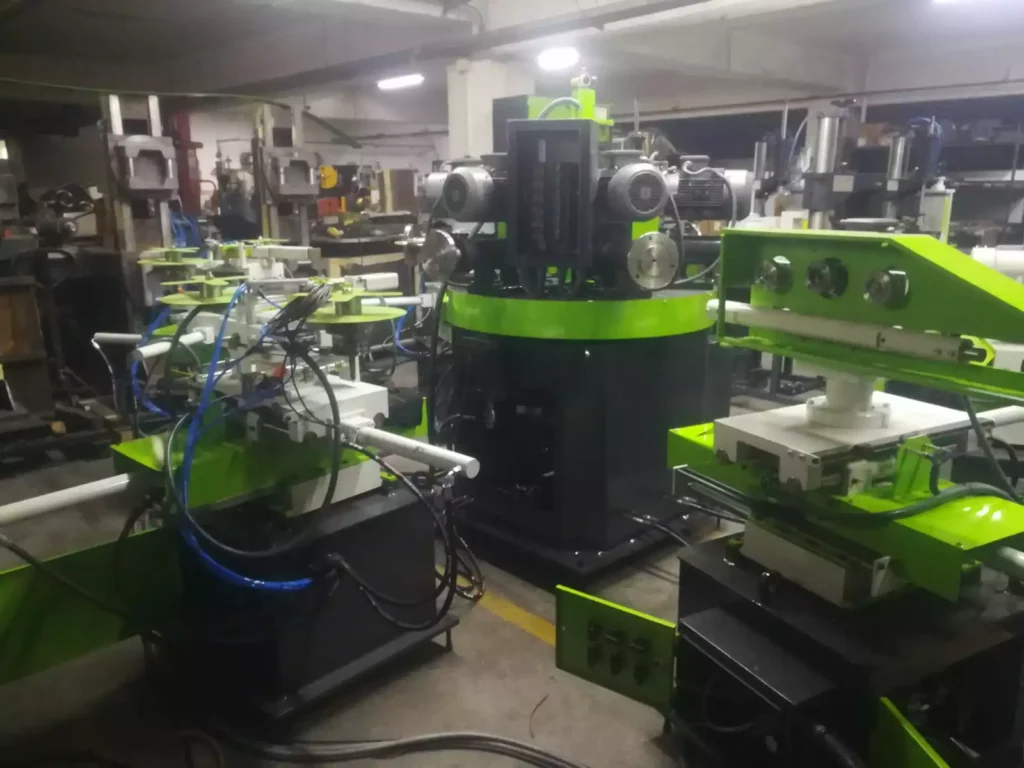
Manual Machines
Manual polishing and buffing machines are the most basic type, requiring direct human operation. These machines are suitable for small-scale operations and tasks that need a hands-on approach. They are typically used for intricate work where precision and control are paramount.
Key Features:
- Simple design and operation.
- Cost-effective for small jobs.
- Ideal for detailed and delicate work.
Applications:
- Jewelry and watchmaking.
- Small metal parts in the automotive and aerospace industries.
Semi-Automatic Machines
Semi-automatic polishing and buffing machines combine manual and automated features. They allow for greater control over the process while improving efficiency compared to fully manual machines. Operators can set parameters and oversee the operation, making adjustments as necessary.
Key Features:
- Enhanced control with automated functions.
- Increased efficiency and throughput.
- Suitable for medium-scale operations.
Applications:
- Mid-sized manufacturing units.
- Complex parts requiring a balance of manual oversight and automation.
CNC (Computer Numerical Control) Machines
CNC polishing and buffing machines represent the pinnacle of automation and precision in surface finishing. These machines use computer-controlled systems to manage the movement and operation of polishing tools with high accuracy. CNC machines are highly programmable, allowing for the automation of complex and repetitive tasks.
Key Features:
- High precision and repeatability.
- Ability to handle complex shapes and surfaces.
- Programmable for different tasks and materials.
Benefits:
- Consistent and high-quality finishes.
- Reduced labor costs and increased productivity.
- Flexibility in manufacturing processes.
Applications:
- Aerospace components.
- High-end automotive parts.
- Medical devices and implants.
NC (Numerical Control) Machines
NC machines, while similar to CNC machines, are generally less sophisticated and do not offer the same level of flexibility and automation. They are controlled by pre-set instructions but lack the advanced programmability of CNC systems.
Key Features:
- Automated control with limited programmability.
- Suitable for less complex tasks.
- Cost-effective compared to CNC machines.
Applications:
- Standardized parts in automotive and metalworking industries.
- Tasks that do not require frequent changes in setup.
Applications of Polishing and Buffing Machines

Automotive Industry
In the automotive industry, polishing and buffing are essential for achieving high-quality finishes on car parts. This includes the polishing of body panels, trim pieces, and engine components to enhance both aesthetics and performance.
Key Uses:
- Surface finishing of body panels.
- Polishing of chrome and aluminum trim.
- Buffing of engine and transmission parts.
Aerospace Industry
The aerospace industry demands the highest standards of precision and quality. Polishing and buffing are critical for ensuring the smooth surfaces necessary for aerodynamics and the performance of critical components.
Key Uses:
- Polishing turbine blades and engine parts.
- Finishing structural components for reduced drag.
- Ensuring the integrity of critical safety parts.
Metalworking Industry
In metalworking, polishing and buffing machines are used to finish metal parts, improving their appearance, resistance to corrosion, and overall quality.
Key Uses:
- Buffing of steel and aluminum parts.
- Finishing of tools and machinery components.
- Surface preparation for coating and painting.
Jewelry and Watchmaking
Precision and aesthetic appeal are paramount in jewelry and watchmaking. Polishing and buffing machines ensure that each piece has a flawless finish.
Key Uses:
- Polishing of precious metals and gemstones.
- Buffing intricate watch parts.
- Achieving high-shine finishes on jewelry.
Electronics Industry
In the electronics industry, surface preparation is crucial for the functionality and longevity of components. Polishing and buffing machines are used to prepare surfaces for assembly and coating.
Key Uses:
- Polishing of semiconductor wafers.
- Buffing of electronic enclosures and cases.
- Surface preparation for circuit boards.
Medical Device Manufacturing
The medical industry relies on highly polished surfaces for both functionality and hygiene. Polishing and buffing machines ensure that surgical instruments and implants meet stringent standards.
Key Uses:
- Polishing surgical instruments.
- Finishing orthopedic implants.
- Ensuring biocompatibility of medical devices.
Consumer Goods
Polishing and buffing are also used in the production of consumer goods, enhancing the aesthetic appeal and durability of everyday items.
Key Uses:
- Finishing of household appliances.
- Polishing of kitchen utensils and cutlery.
- Buffing of decorative items and hardware.
Production Process of Polishing and Buffing Machines
Design and Engineering
The production of polishing and buffing machines begins with design and engineering. This involves conceptualizing the machine, creating detailed CAD models, and planning the manufacturing process.
Steps:
- Conceptual design and feasibility studies.
- Detailed engineering using CAD software.
- Prototype development and testing.
Material Selection
Selecting the right materials is crucial for the durability and performance of polishing and buffing machines. Common materials include high-grade steels, aluminum alloys, and composite materials for specific parts.
Considerations:
- Durability and wear resistance.
- Weight and strength.
- Compatibility with various polishing materials.
Manufacturing Techniques
Manufacturing polishing and buffing machines involves several techniques, including machining, welding, assembly, and quality control. Each step is critical to ensuring the final product meets industry standards.
Techniques:
- CNC machining of components.
- Welding and fabrication of the machine frame.
- Assembly of mechanical and electronic parts.
- Rigorous testing and quality assurance.
Quality Control
Quality control is an integral part of the production process, ensuring that each machine meets the required specifications and performs reliably.
Methods:
- In-process inspections.
- Final testing of performance and safety.
- Certification to industry standards.
Materials Polished with Industrial Machines
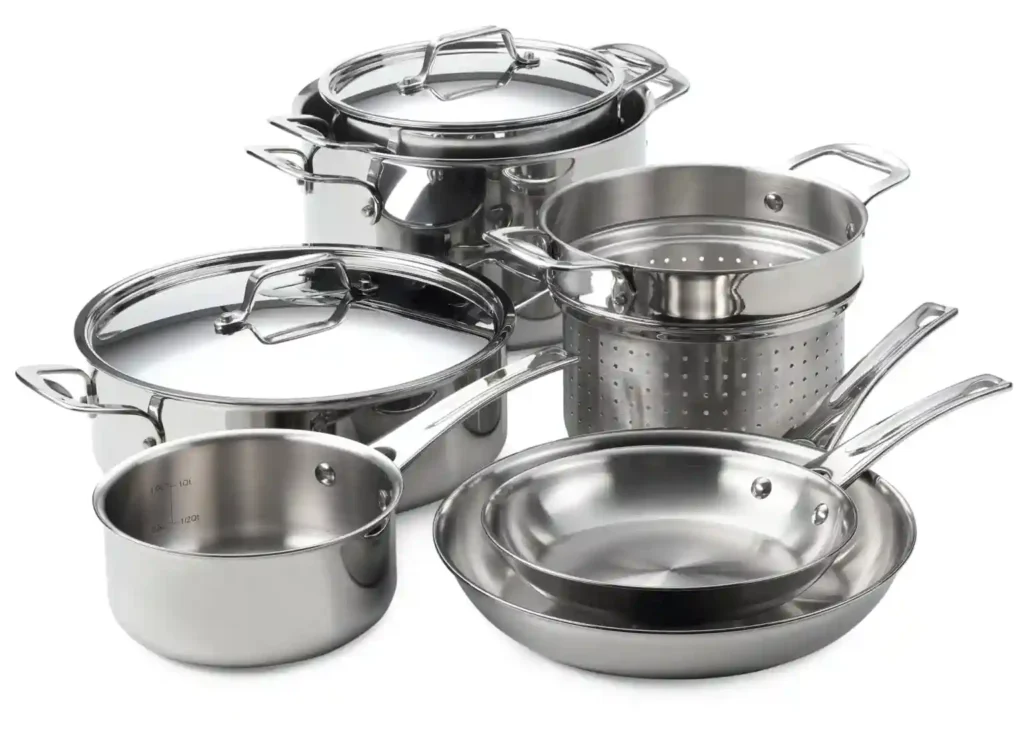
Metals
Metals are the most common materials polished with industrial machines. This includes a wide range of metals used in various industries.
Examples:
- Stainless steel.
- Aluminum.
- Brass.
- Titanium.
Plastics
Certain types of plastics can also be polished to achieve a smooth and glossy finish, particularly in the electronics and consumer goods industries.
Examples:
- Acrylics.
- Polycarbonates.
- PVC.
Wood
Polishing wood can enhance its natural beauty and protect it from damage. This is commonly done in furniture making and decorative items.
Examples:
- Hardwood (oak, mahogany).
- Softwood (pine, cedar).
- Engineered wood (plywood, MDF).
Ceramics and Glass
Polishing ceramics and glass is delicate work that requires specialized techniques to avoid cracking and chipping.
Examples:
- Fine china.
- Glassware.
- Porcelain tiles.
Composites
Composites are used in advanced industries such as aerospace and automotive. Polishing these materials requires specialized equipment to handle their unique properties.
Examples:
- Carbon fiber.
- Fiberglass.
- Kevlar.
Advantages of Using CNC and NC Machines
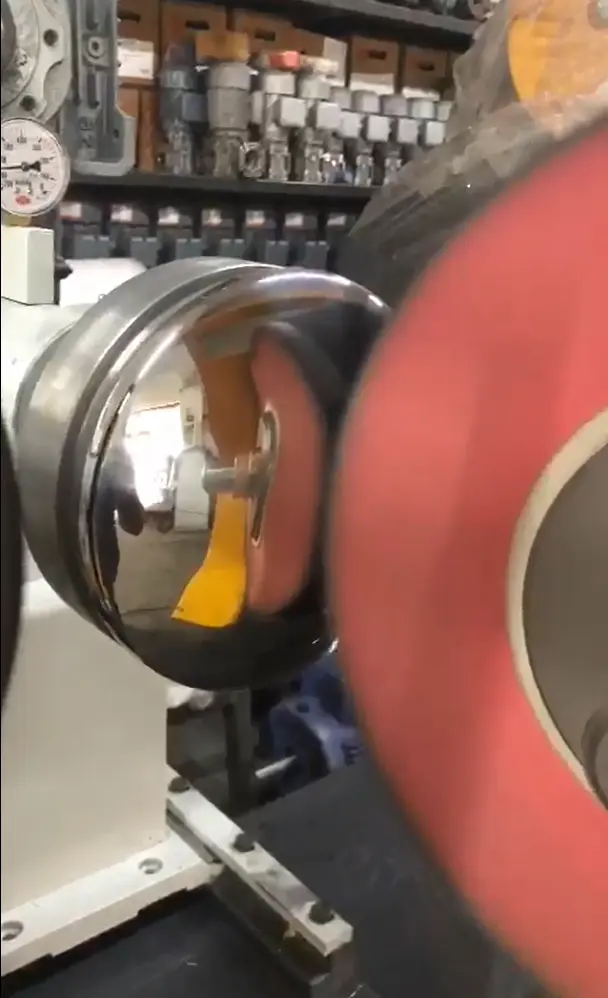
Precision and Consistency
CNC and NC machines offer unmatched precision and consistency, ensuring that each part meets exact specifications.
Benefits:
- Uniform finishes across large batches.
- High accuracy in complex geometries.
- Reduced human error.
Efficiency and Speed
These machines significantly reduce processing times, increasing overall productivity and allowing for faster turnaround times.
Benefits:
- Rapid processing of parts.
- Increased throughput.
- Shorter lead times.
Automation and Flexibility
Automation allows for continuous operation and the ability to handle multiple tasks without manual intervention.
Benefits:
- Customizable for various tasks.
- Minimal supervision required.
- Adaptable to different materials and shapes.
Cost-effectiveness
While the initial investment in CNC and NC machines can be high, the long-term savings in labor and increased efficiency make them cost-effective.
Benefits:
- Lower labor costs.
- High return on investment.
- Reduced material waste.
Challenges and Considerations
Initial Investment Costs
The cost of purchasing and installing CNC and NC machines can be significant, making it a major consideration for businesses.
Factors:
- Budgeting for high-quality machinery.
- Evaluating long-term benefits versus initial costs.
Maintenance and Upkeep
Regular maintenance is essential to ensure the longevity and performance of these machines.
Considerations:
- Scheduled maintenance and repairs.
- Availability of spare parts.
- Training for maintenance personnel.
Training and Skilled Labor
Operating CNC and NC machines requires skilled operators who understand the intricacies of programming and machine control.
Considerations:
- Investing in operator training.
- Ensuring continuous education on new technologies.
- Retaining skilled labor.
Technological Advancements
Keeping up with the latest advancements in technology is crucial for maintaining a competitive edge.
Considerations:
- Upgrading machinery and software.
- Staying informed about industry trends.
- Investing in research and development.
Future Trends in Polishing and Buffing Technology
Advancements in Automation and AI
The integration of artificial intelligence in polishing and buffing machines is set to revolutionize the industry by enhancing precision and efficiency.
Trends:
- AI-driven process optimization.
- Predictive maintenance using machine learning.
- Autonomous operation and monitoring.
Sustainable Practices
Sustainability is becoming increasingly important in manufacturing, with a focus on eco-friendly materials and processes.
Trends:
- Use of recyclable materials.
- Energy-efficient machinery.
- Reduction of waste and emissions.
Integration with Industry 4.0
Industry 4.0 involves the integration of smart technologies and IoT in manufacturing processes, providing real-time data and improving overall efficiency.
Trends:
- Smart manufacturing systems.
- Real-time monitoring and analytics.
- Enhanced connectivity and automation.
Conclusion
Industrial polishing and buffing machines play a vital role in various industries, ensuring that products meet the highest standards of quality and performance. From manual to advanced CNC and NC machines, each type offers unique benefits and is suited to different applications. Understanding the production processes, materials, and advantages of these machines is essential for businesses looking to improve their manufacturing capabilities. As technology continues to evolve, the future of polishing and buffing machines looks promising, with advancements in automation, sustainability, and smart manufacturing paving the way for more efficient and effective production methods.
By investing in the right equipment and staying informed about industry trends, manufacturers can achieve superior finishes, reduce costs, and maintain a competitive edge in their respective markets.
